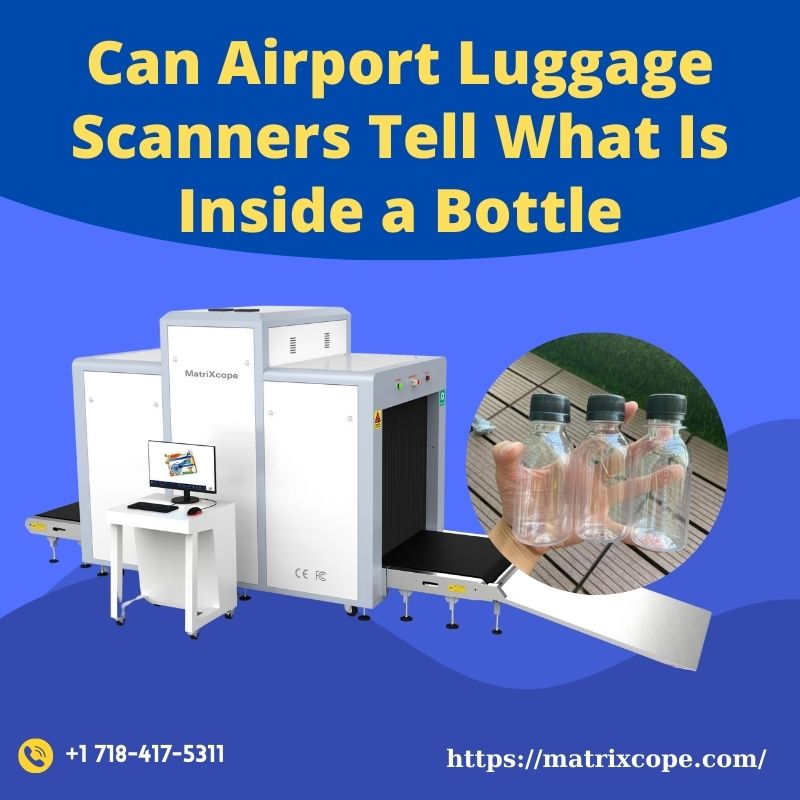Blogs
Can Airport Luggage Scanners Tell What Is Inside a Bottle?
Airport security relies heavily on advanced technology to ensure the safety of all passengers and crew. One common question among travelers is whether airport luggage scanners can identify the contents of a bottle.

How Airport Luggage Scanners Work
Airport luggage scanners primarily use X-ray technology to inspect the contents of bags and suitcases. These X-ray scanners operate by emitting X-rays that pass through luggage and are absorbed at different rates by various materials inside. The scanner then generates an image that security personnel can analyze. The image produced is color-coded based on the density and atomic number of the materials, allowing for differentiation between organic, inorganic, and metallic substances.
Factors Affecting Visibility
Material of the Bottle:
Plastic and Glass Bottles: Both materials are generally transparent to X-rays to varying degrees. This means that the scanner can often see through the bottle and identify its contents based on the density and absorption characteristics.
Metal Bottles: Metal bottles are more challenging for X-ray scanners to penetrate. The metal can obscure the view of the contents inside, leading to a need for additional inspection.
Contents of the Bottle:
Liquids: Most liquids have a distinct X-ray signature that can be detected by the scanner. Water, alcohol, and other common liquids can usually be identified based on their density and the way they absorb X-rays.
Gels and Solids: Similarly, gels and solids within bottles can be differentiated based on their X-ray characteristics. However, it may be more challenging to identify specific substances without further analysis.
Limitations and Additional Screening:
While X-ray scanners provide a good indication of the contents based on density and material composition, they do have limitations. For instance, they cannot determine the exact chemical composition of a liquid or solid inside a bottle. If the contents are unclear or appear suspicious, security personnel may conduct additional screening, such as:
Manual Inspection: Security personnel may open the bag and visually inspect the bottle and its contents.
Chemical Testing: In some cases, a small sample of the liquid might be tested using chemical detection kits to identify potential hazardous substances.
Advanced Scanners: Some airports use more advanced scanners, such as CT (computed tomography) scanners, which provide even more detailed images and can help better identify the contents of a bottle.
Conclusion
Airport luggage scanners are effective at identifying the general nature of the contents inside bottles, especially when the bottles are made of materials that X-rays can penetrate. However, they cannot always determine the exact chemical composition. If the scanner cannot clearly identify the contents or if there is any suspicion, additional screening measures are employed to ensure safety. Adhering to airport security regulations and being mindful of what you pack can help facilitate a hassle-free travel experience.
